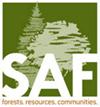Reliability of Noninvasive Sonic Tomography for Detection and Quantification of Internal Defects in Yoshino Cherry
IF 1.5
4区 农林科学
Q2 FORESTRY
引用次数: 0
Abstract
Preventive maintenance through monitoring and early detection is important for trees that are structurally weak due to internal decay. Once internal decay has occurred, recovery of lost strength is irreversible. The decaying tree becomes vulnerable to external impacts, which may lead to breakage or windthrow. The Yoshino cherry (Cerasus×yedoensis (Matsum.) “Somei-yoshino”) accounts for a high proportion of landscape trees in Asia. Testing the reliability of noninvasive sonic tomography (SoT) to estimate internal defects could facilitate structural stability evaluation and proactive preventive management. We performed noninvasive SoT and invasive resistance microdrilling to detect and quantify internal defects in old and large Yoshino cherry trees. Generally, SoT reflected the areas and location of severe structural defects, showing a correlation with the resistance microdrilling results (R² = 0.542, p < .001). However, when cracks were present in disks, the SoT overestimated defects and errors mainly observed in the transition zone (green). Based on these findings, when evaluating the SoT, careful decisions are needed to distinguish between actual defects and broad sonic shadows. Furthermore, additional evidence from drilling resistance is required to differentiate between incipient decay and cracks. The results of this study provide valuable insights for enhancing the interpretation of sonic tomograms. Study Implications: We suggest defect boundaries in sonic tomograms should be redefined to improve the accuracy of interpretation for any new species being studied. Careful drilling resistance measurements should be taken, especially in transition zones (green areas in tomogram) and incipient decay zone (light brown areas). Noninvasive sonic tomograms only reflect acoustic properties of the tested cross-section of a tree and cannot be considered an actual representation of the internal conditions until the readings are calibrated to destructive sampling results.无创声波断层扫描用于检测和量化吉野樱内部缺陷的可靠性
对于因内部腐烂而结构脆弱的树木来说,通过监测和早期发现进行预防性维护非常重要。一旦发生内部腐烂,失去的强度的恢复是不可逆的。腐烂的树木很容易受到外部冲击,可能导致折断或被风吹倒。吉野樱(Cerasus×yyedoensis (Matsum.) "Somei-yoshino")在亚洲的景观树中占很大比例。测试无创声波断层扫描(SoT)估测内部缺陷的可靠性有助于结构稳定性评估和积极的预防性管理。我们采用非侵入式声波断层扫描和侵入式电阻微钻孔技术来检测和量化大型吉野樱古树的内部缺陷。一般来说,SoT 反映了严重结构缺陷的区域和位置,与电阻微钻结果显示出相关性(R² = 0.542,p &pamp;lt;.001)。然而,当磁盘上出现裂纹时,SoT 高估了缺陷,误差主要出现在过渡区(绿色)。基于这些发现,在评估 SoT 时,需要谨慎决策,以区分实际缺陷和宽泛的声波阴影。此外,还需要从钻孔阻力中获得更多证据,以区分初期衰变和裂缝。本研究的结果为加强声波层析成像图的解释提供了宝贵的见解。研究意义:我们建议应重新定义声波层析成像图中的缺陷边界,以提高对任何正在研究的新物种进行解释的准确性。应仔细测量钻孔阻力,尤其是在过渡区(层析成像图中的绿色区域)和初生衰变区(浅棕色区域)。非侵入式声波层析成像图只能反映树木测试横截面的声学特性,在将读数与破坏性取样结果进行校准之前,不能将其视为内部状况的实际代表。
本文章由计算机程序翻译,如有差异,请以英文原文为准。
求助全文
约1分钟内获得全文
求助全文
来源期刊

Forest Science
农林科学-林学
CiteScore
2.80
自引率
7.10%
发文量
45
审稿时长
3 months
期刊介绍:
Forest Science is a peer-reviewed journal publishing fundamental and applied research that explores all aspects of natural and social sciences as they apply to the function and management of the forested ecosystems of the world. Topics include silviculture, forest management, biometrics, economics, entomology & pathology, fire & fuels management, forest ecology, genetics & tree improvement, geospatial technologies, harvesting & utilization, landscape ecology, operations research, forest policy, physiology, recreation, social sciences, soils & hydrology, and wildlife management.
Forest Science is published bimonthly in February, April, June, August, October, and December.
 求助内容:
求助内容: 应助结果提醒方式:
应助结果提醒方式:


